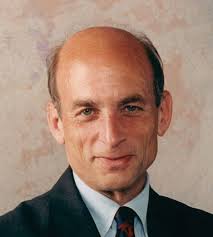The Economist covers the shrinkage of Big Law, focusing on Howrey’s demise. The article covers themes in my recent papers, particularly including Death of Big Law, Law’s Information Revolution and Practicing Theory. It particularly points out what I discussed in Death of Big Law:
Howrey’s fall shows just how fragile even a 55-year-old firm can be. Since a firm’s only real assets are its partners, when a few departures turn into an exodus, the end can be shockingly quick.
What triggered Howrey’s implosion? The Economist echoes my assessment that it reflects three big trends rather than just a “cyclical” phenomenon: “clients’ determination to keep their bills down;” outsourcing, and “the growth of technology in an industry long synonymous with trained human judgment.”
Howrey boss Robert Ruyak blamed clients’ resistance to hourly billing and e-discovery vendors. But as I’ve discussed these are symptoms of deeper causes, including the big trends just listed.
The Economist suggests that the firms likely survive include elite wide-spectrum firms like Davis Polk & Wardwell; Sullivan & Cromwell; Cleary Gottlieb Steen & Hamilton; and Simpson Thacher & Bartlett; specialist firms such as m & a specialists Wachtell and Cravath.
My prediction (from Death of Big Law at 777) is both more general and more precise:
The basic question confronting the large law firm is the extent to which these firms produce substantial profits at the firm level, or instead are just aggregations of lawyers or of relatively small networks of lawyers. The theory of the Big Law “firm” is based on the idea that the firm generates reputational capital. However, the conditions for maintaining this capital, particularly including seniority-based compensation and a rigid up-or-out promotion tournament, exist only in a relatively few top-line firms, such as Cravath. Many more have adopted the Big Law form without the internal structure necessary to maintain it.
This supports the Economist’s prediction for the success of “elite” firms, but bodes ill for what the Economist refers to as a third class of firms that are “big and well-known, but do not have the glittering reputations of the first two groups,” including Jones Day, DLA Piper and Baker & McKenzie. As the article says, “[t]here is money in globalising, but not enough for everyone.” The major factor in big firm survival is the firm’s ability to maintain the reputational bonds that hold firms together. Globalization makes this harder, not easier. Moreover, the article points out that globalization thrusts firms into countries that “protect their turf” against foreign intruders.
In sum, the article notes, “lawyering is becoming more of a business than a profession. * * * Because the American market cannot grow as it used to, firms will have to find new strategies and make use of sophisticated branding to stand out.” This may require lawyers “becoming experts in other industries,” or joining with other professionals in “all-in-one professional-service firms.” These are among the approaches my articles discuss.
But I note in my and Kobayashi’s Information Revolution and in Practicing Theory that the changes in the legal profession won’t stop with new types of law firms. The end game is the creation of a new “legal information” industry.




